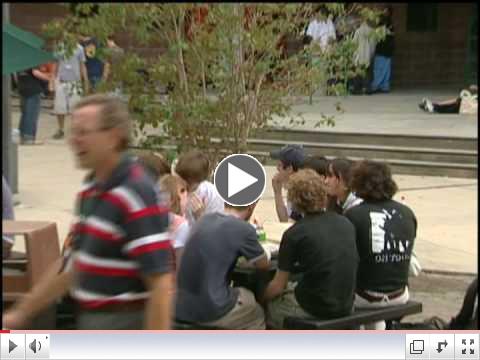Employment among school children- Deleterious effects?
| |
An examination of the associations between paid part-time employment of 11, 13 and 15 year olds and adult substance abuse, psychological well-being and academic achievement was undertaken.
"There is no consistent evidence that exposing school children to part-time employment compromises subsequent health, well-being and education in a developed country".
Journal of Adolescent Health
See Related Video:
Jobs for school age children, negative outcomes?
|
|
Laparoscopic rectoplexy for external prolapse in children.
| |
Pediatric rectal prolapse is a relatively benign, self-limiting disorder of unknown etiology occurring usually in under 4 year old children (mostly in the first year of life). Without treatment it may become chronic with life-style effects. It probably begins as mucosal prolapse starting at the mucocutaneous junction, & progresses to full-thickness prolapse. It has been associated with a wide variety of conditions. While rectal prolapse should be considered a "symptom" and appropriate investigations undertaken, most patients will respond to conservative treatment and/or the management of the underlying cause. Surgical treatment is considered for children who do not respond to conservative management.
Rectal prolapse surgery can be done through the abdomen or through the perineum. Children generally do well with both approaches but many surgeons prefer the abdominal route. Laparoscopy has been utilized for both approaches.
A small study examining 18 procedures including both suture and mesh rectoplexy for infant rectal prolapse indicates that laparoscopic mesh rectoplexy appears safe, giving excellent results with no complications.
Journal of Pediatric Surgery
|
|
Updates in Pediatrics is brought to you by:
| |
|
Underwriting Opportunities
|
With a circulation of over 5,000, Updates in Pediatrics offers an excellent opportunity to promote your brand at affordable rates.
|
|
The lifetime prevalence of child sexual abuse/assault assessed in late adolescence.
Data from three similarly designed national telephone surveys of pool information from 2,293, 15-17 year old adolescents questioned on sexual abuse, indicates that 22.6% of girls (11.2% by adult perpetrators) and 5.1% boys (1.9% by adults exclusively), suffer from sexual abuse/assault. It appears that abuse/assault increases from age 15 to 17 years inclusively.
Journal of Adolescent Health
|
Effectiveness of stimulant medication in the treatment of ADHD.
A retrospective analysis of 379 children with ADHD studied from birth to 17.2 years of age (mean) where each episode of stimulant treatment was examined, indicates that 77.8% of them are treated with stimulants (dextroamphetamine and methylphenidate) starting at age 9.8 years (mean), & lasting approximately 33 months. 73.1% of treatments are associated with a favorable result.
Journal of Developmental & Behavioral Pediatrics
|
Video Feature (via YouTube)
 | Shy teens at higher risk
of substance abuse |
|
Accuracy of the Infrared ear thermometer in children.
There are many sites and types of instruments used to measure body temperature in children. A systematic review and meta-analysis of a relatively new alternative, infrared ear thermometry, indicates that this method is too inaccurate to replace rectal thermometry in clinical practice in children.
Clinical Pediatrics
|
Variation in the management of infants hospitalized for Bronchiolitis, post 2006 AAP guidelines.
In the management of infant bronchiolitis, "systemic reviews and meta-analysis of large bodies of evidence have shown a lack of benefit for a range of medical treatments, specifically drug therapies including corticosteroids and inhaled bronco dilators". Inpatient therapy should focus primarily on supportive treatment and the reduction of unnecessary testing. (AAP subcommittee issued recommending guidelines on the Diagnosis and Management of Bronchiolitis; Pediatrics October 2006, 118, 4 page 1774).
Data from a cross sectional study of infants <12 months hospitalized in 42 hospitals for bronchiolitis in 2007-2012, indicates that the use of albuterol, racemic epinephrine, chest radiography, antibiotics and corticosteroids remains unchanged (in spite of the AAP guidelines) with resultant increases in hospital length of stay & cost (with no benefit to the patient).
Journal of Pediatrics
|
|
|
Download, print and pin this information on your office wall.
-This is a "Must Have" (Ed.)
|
|
|